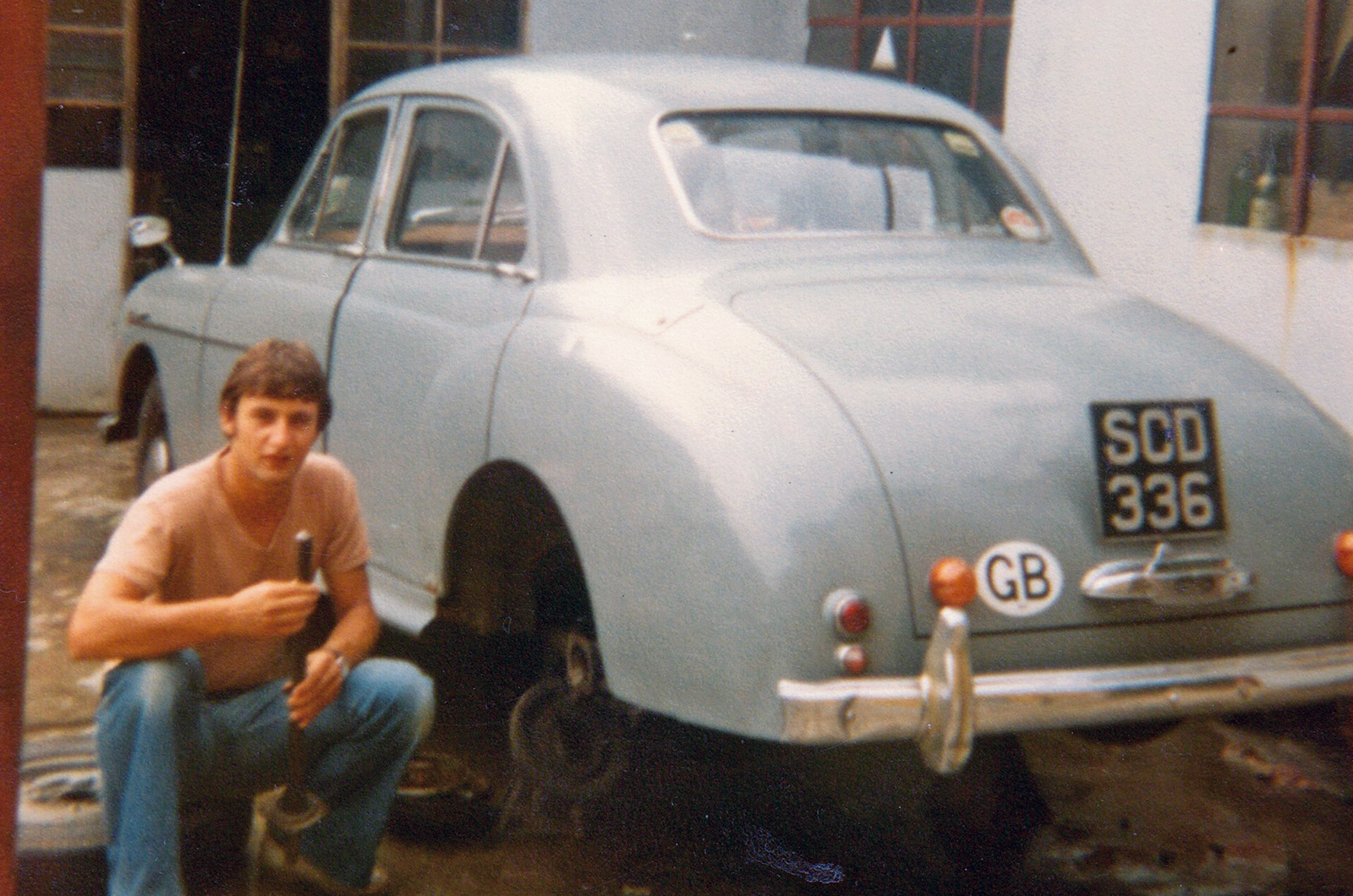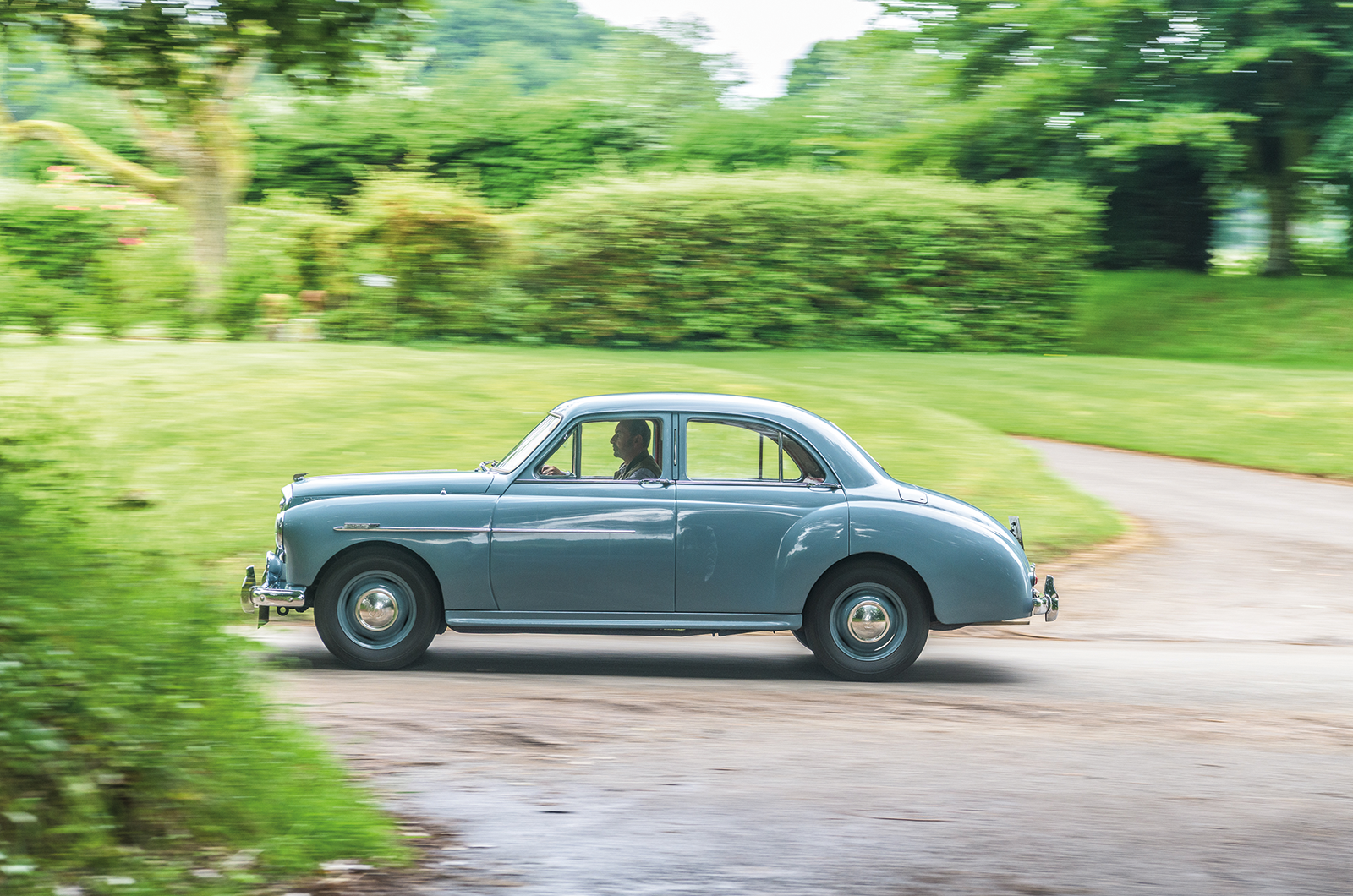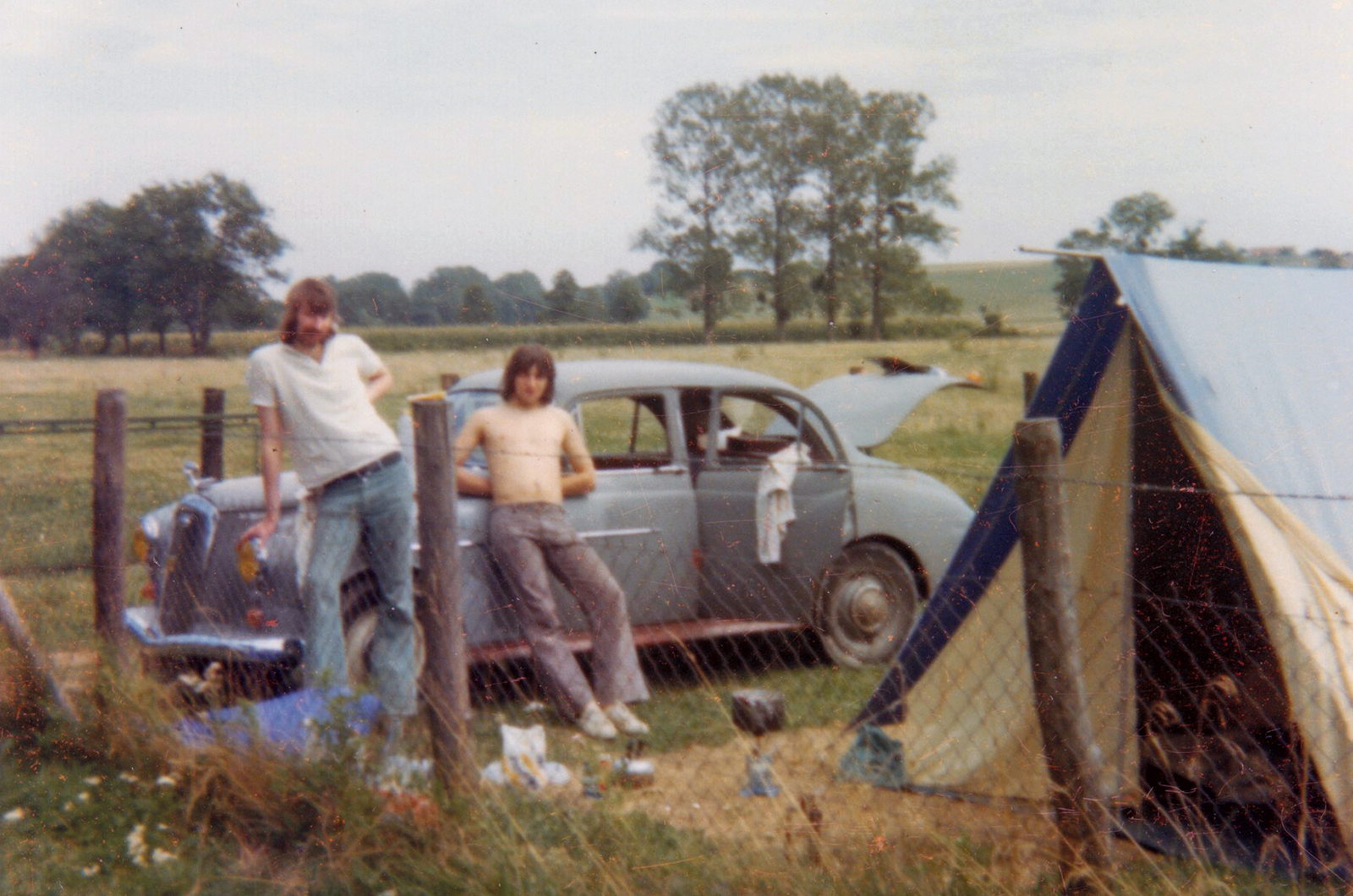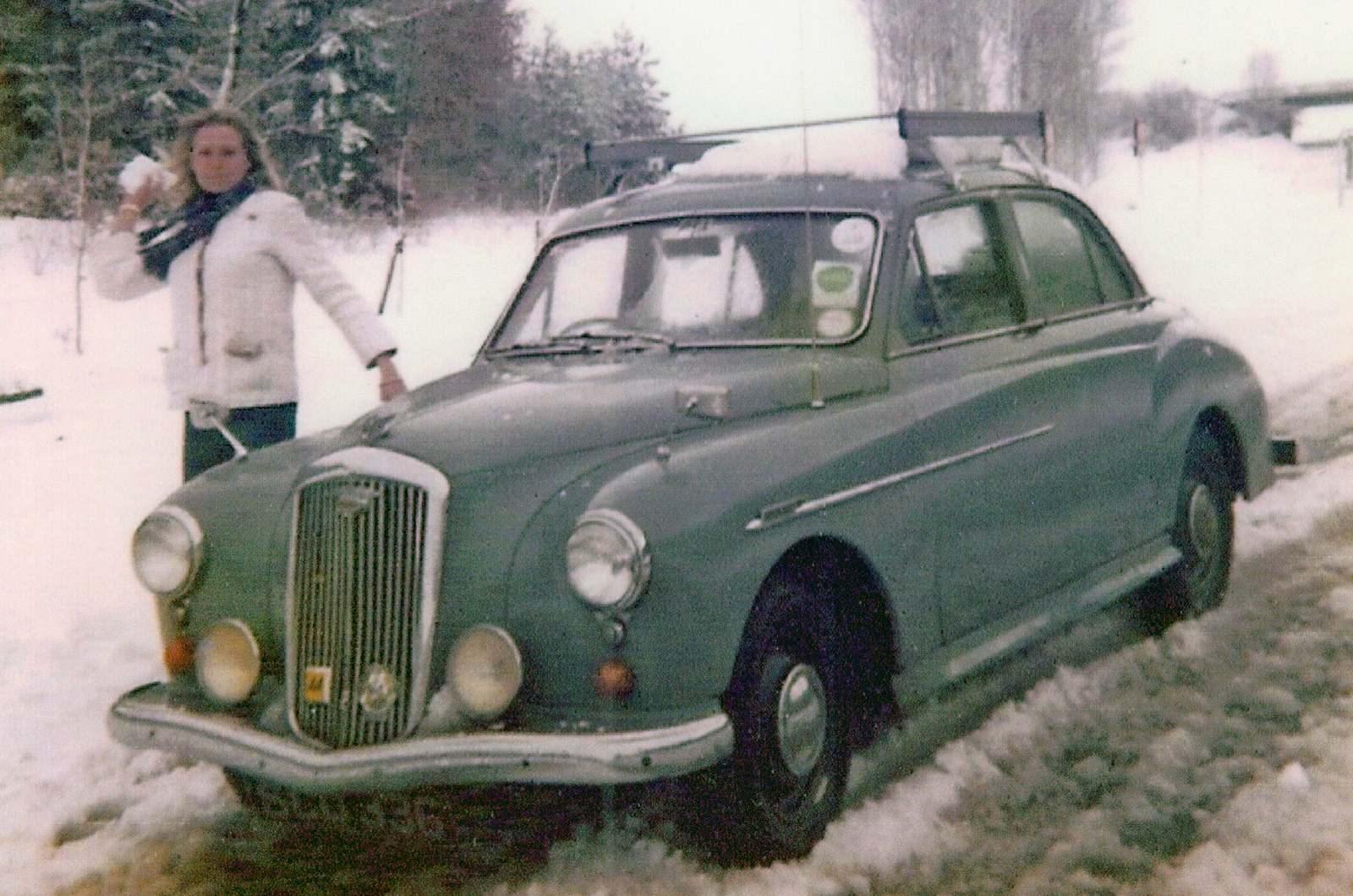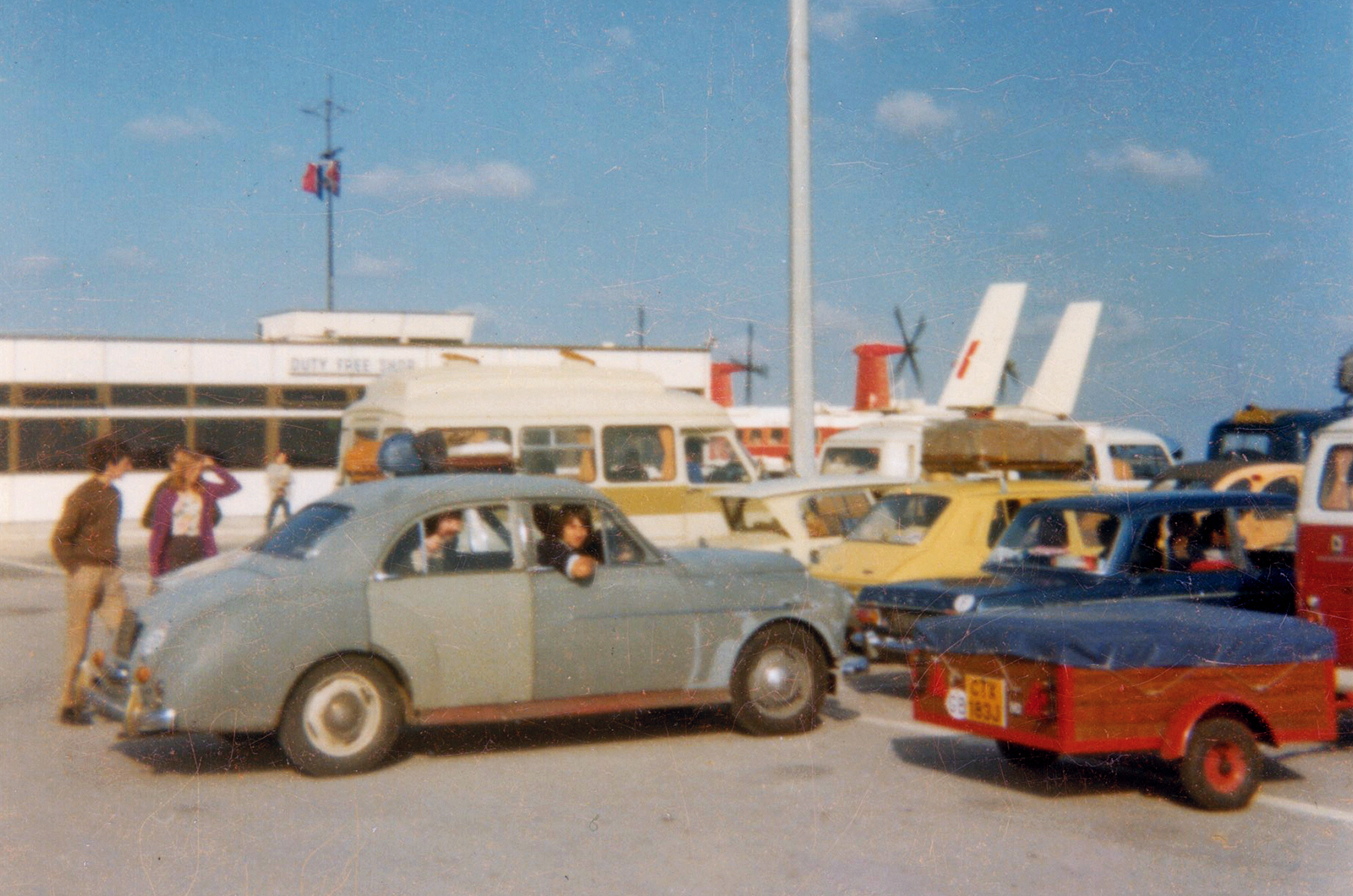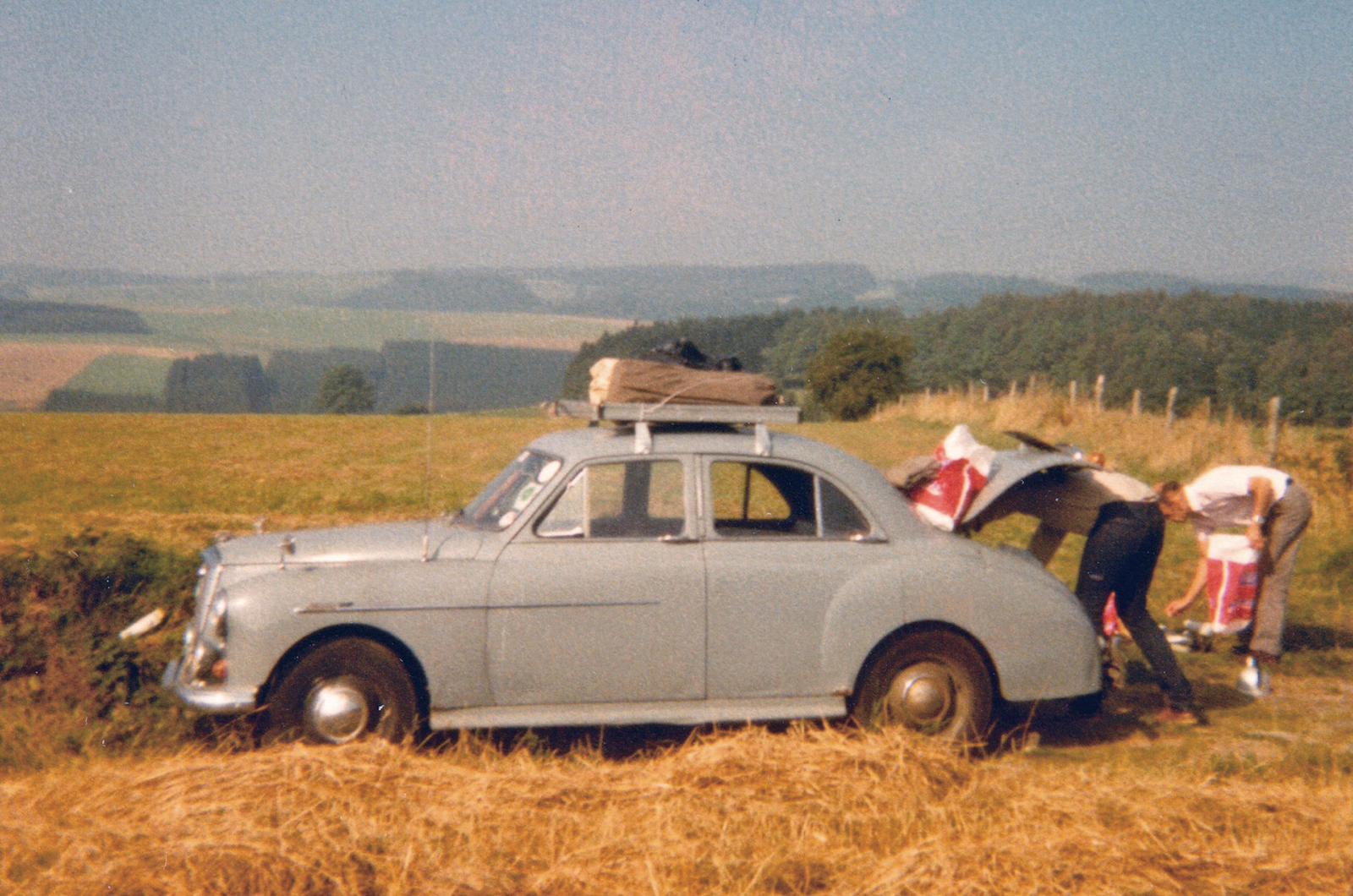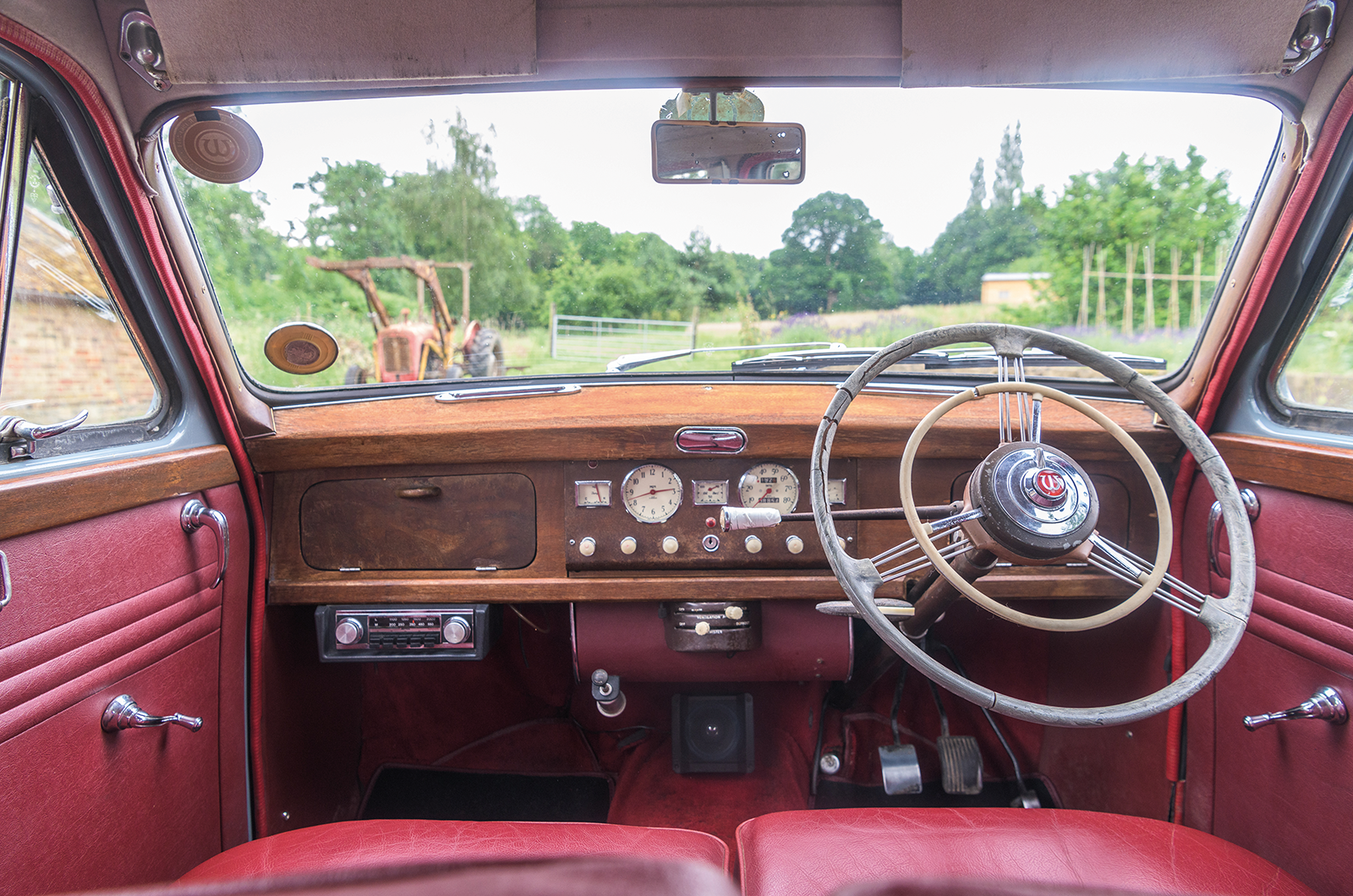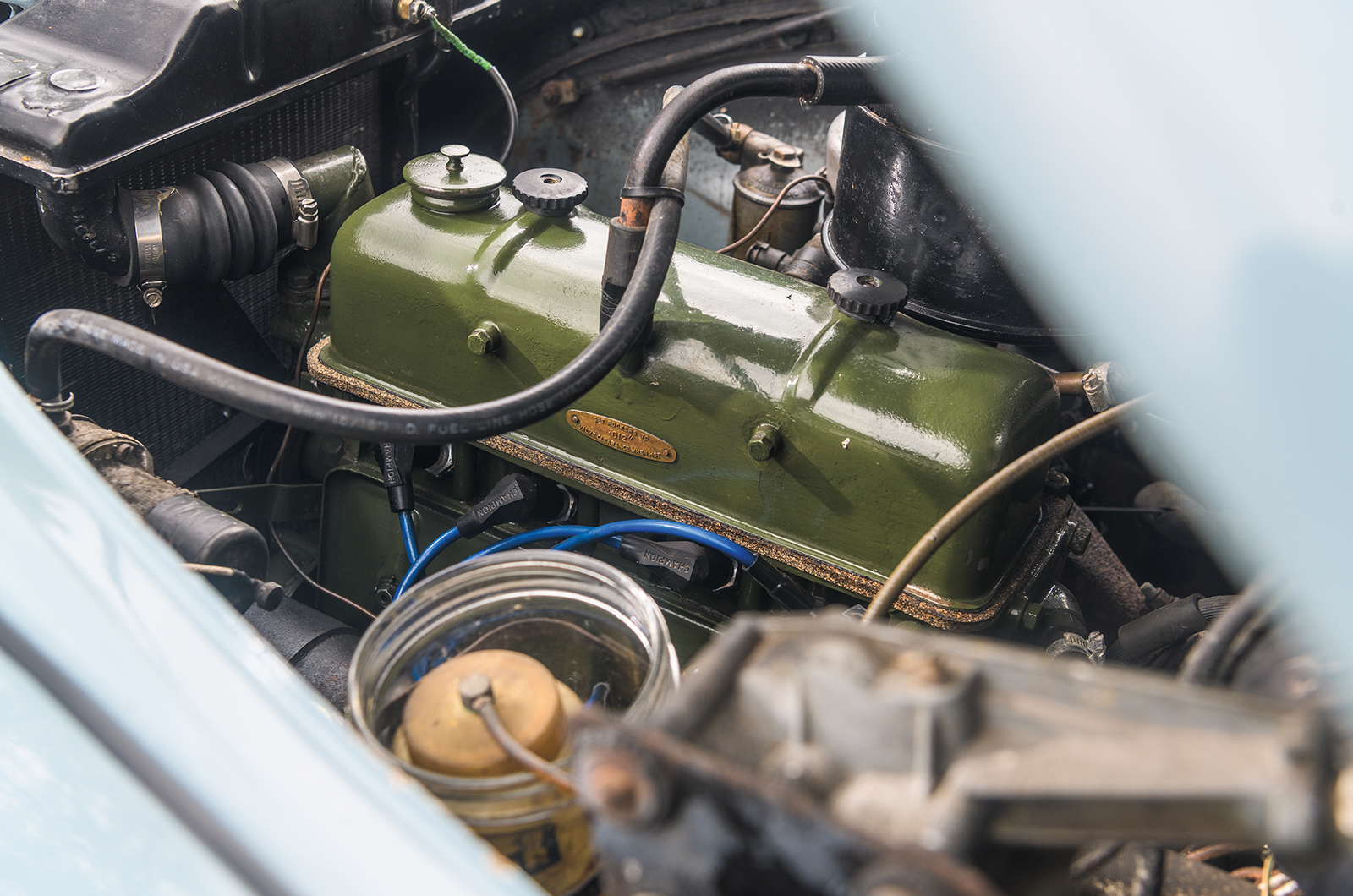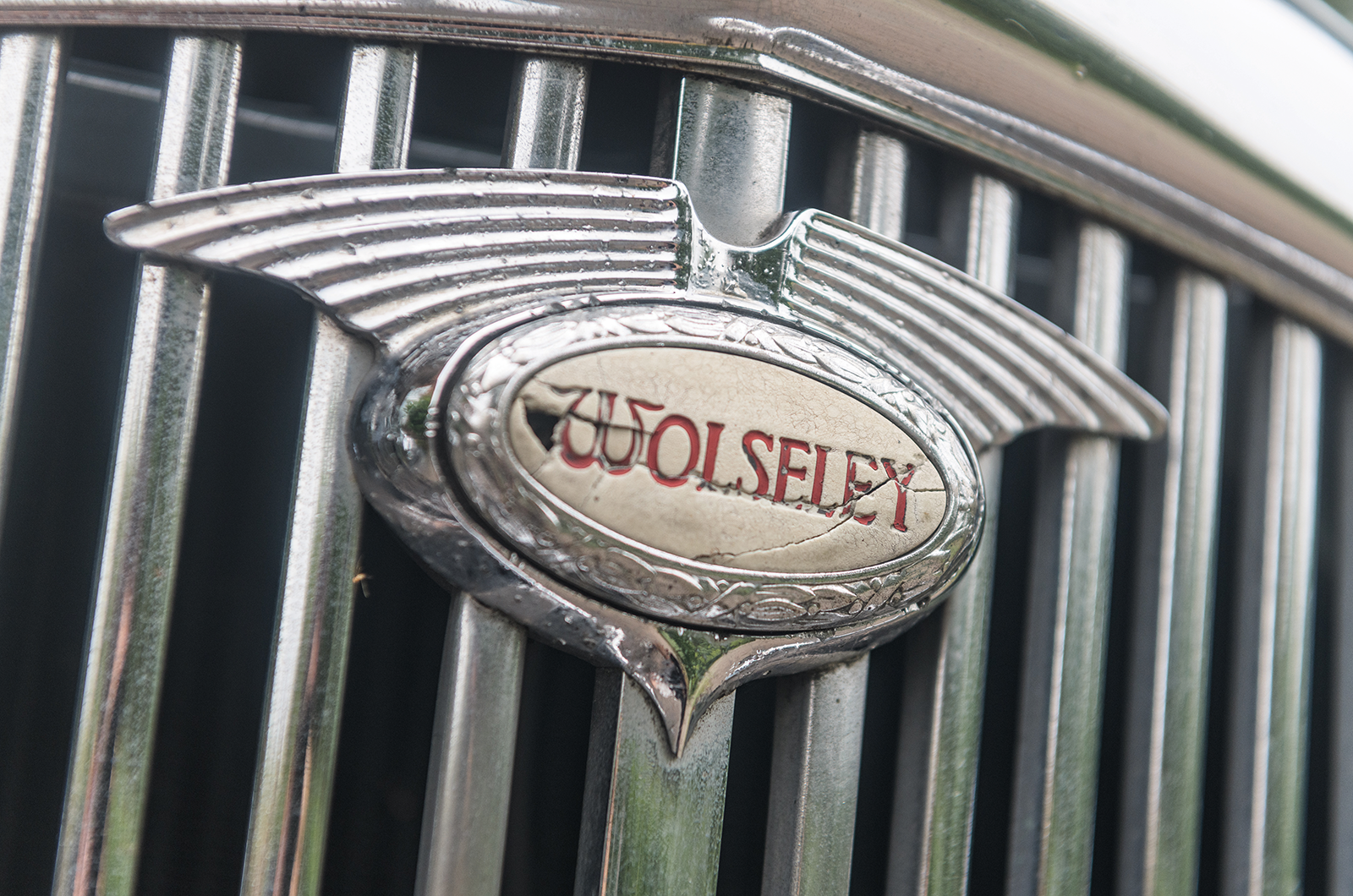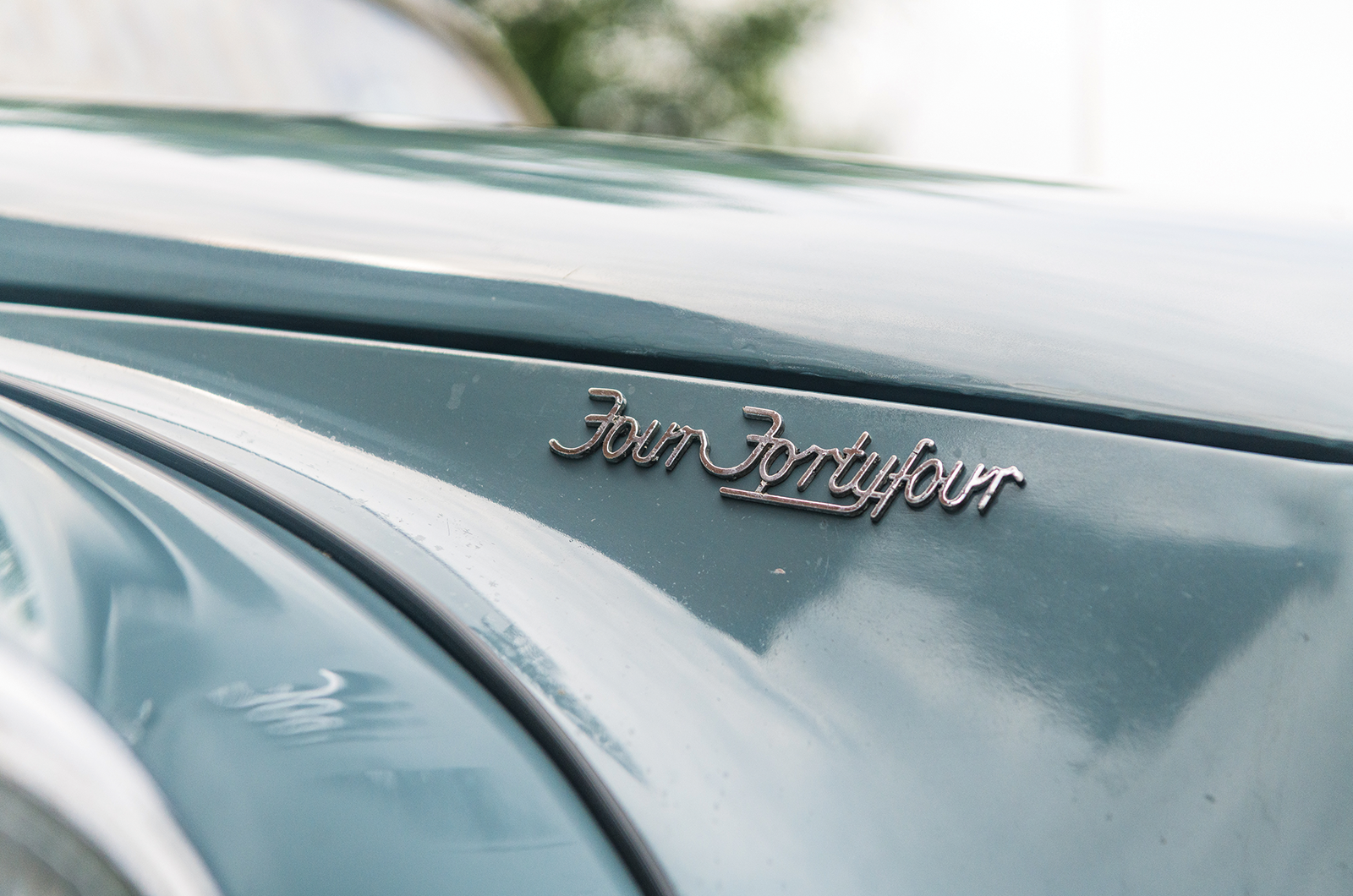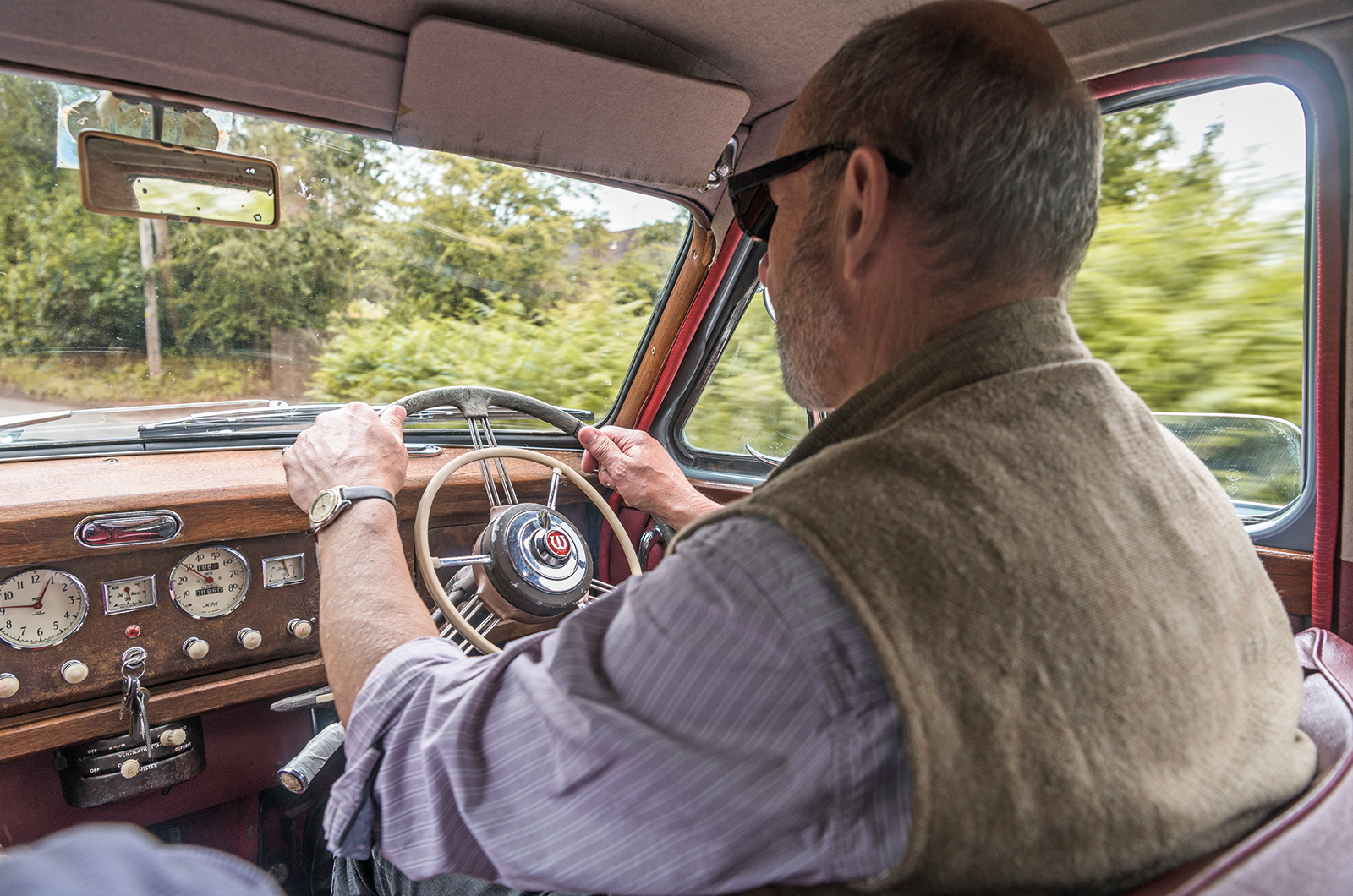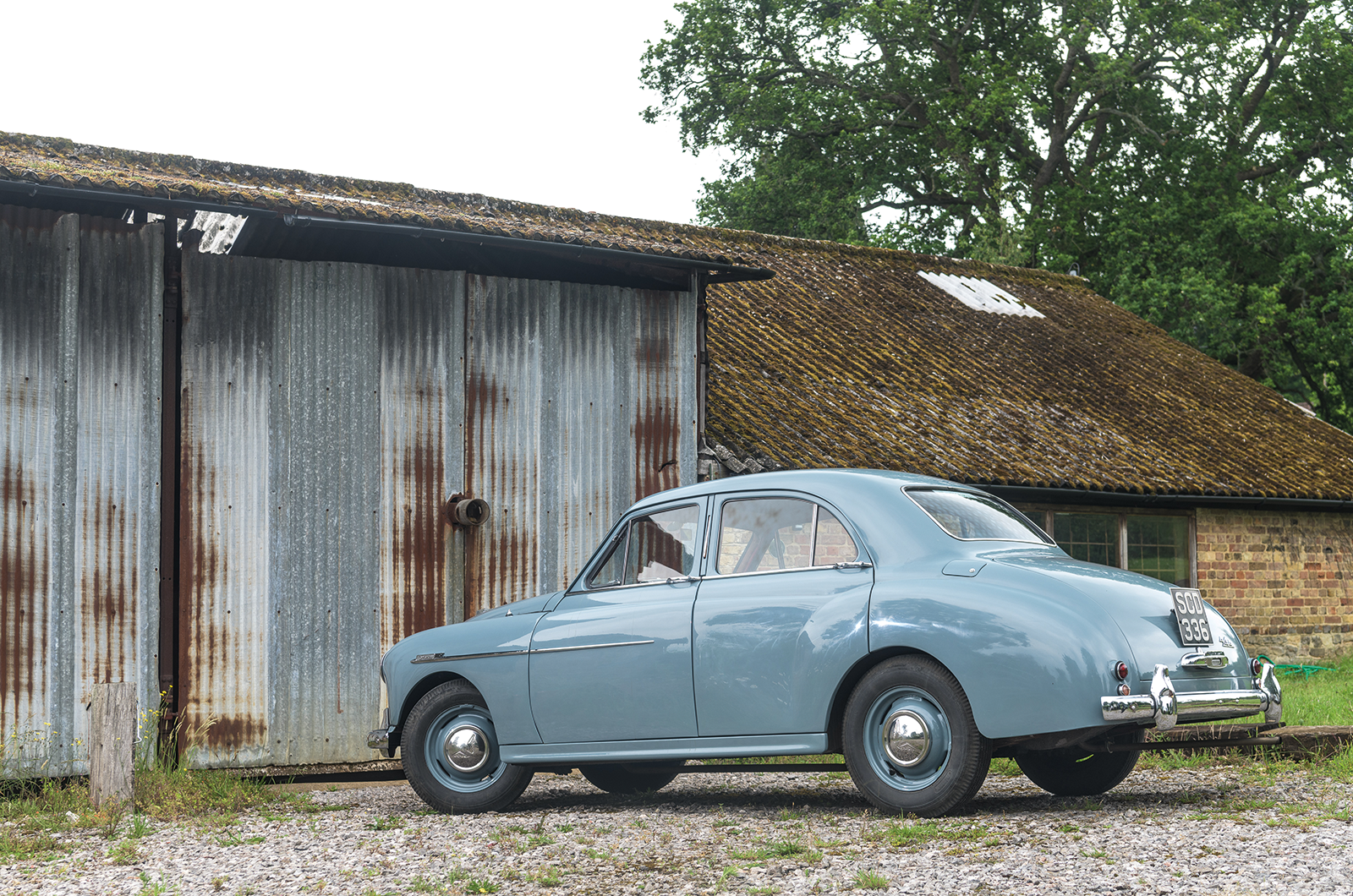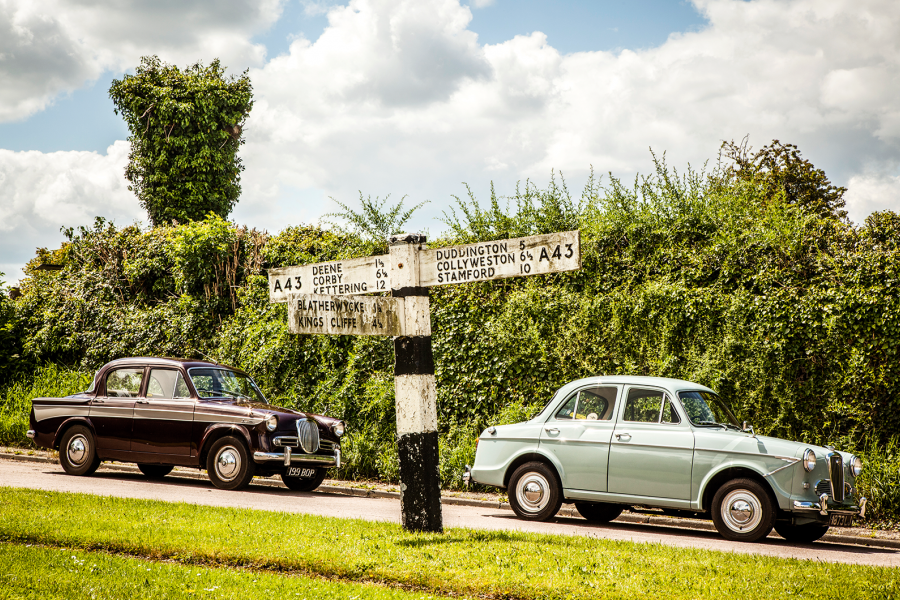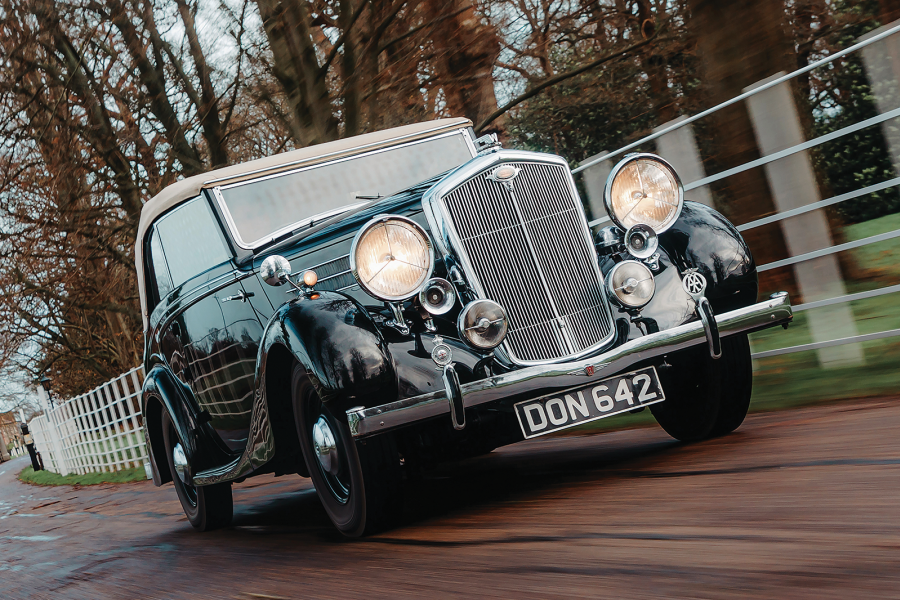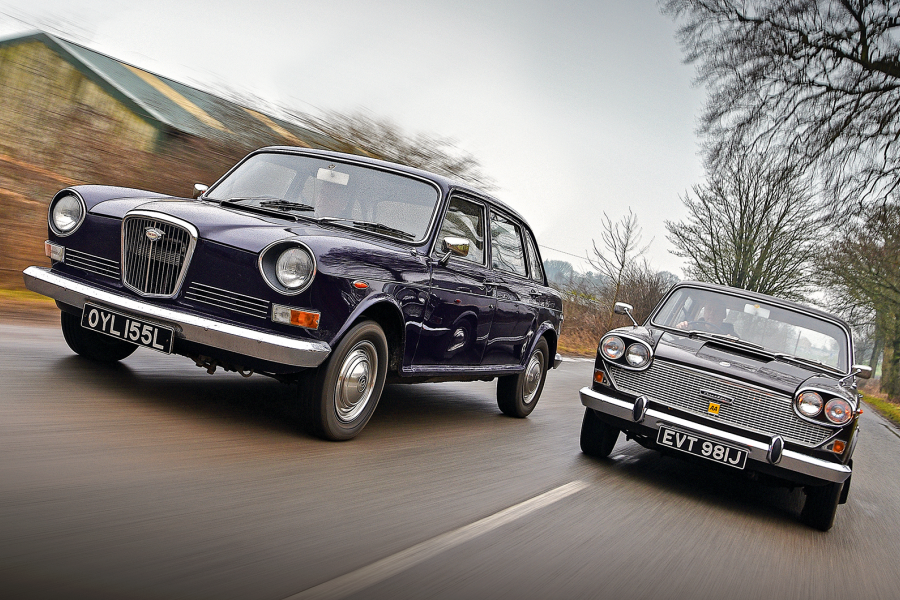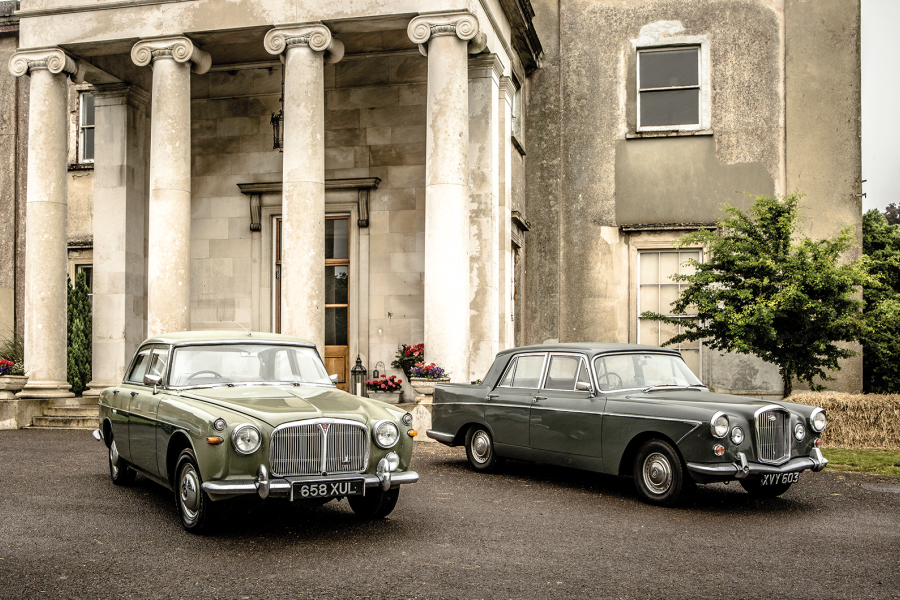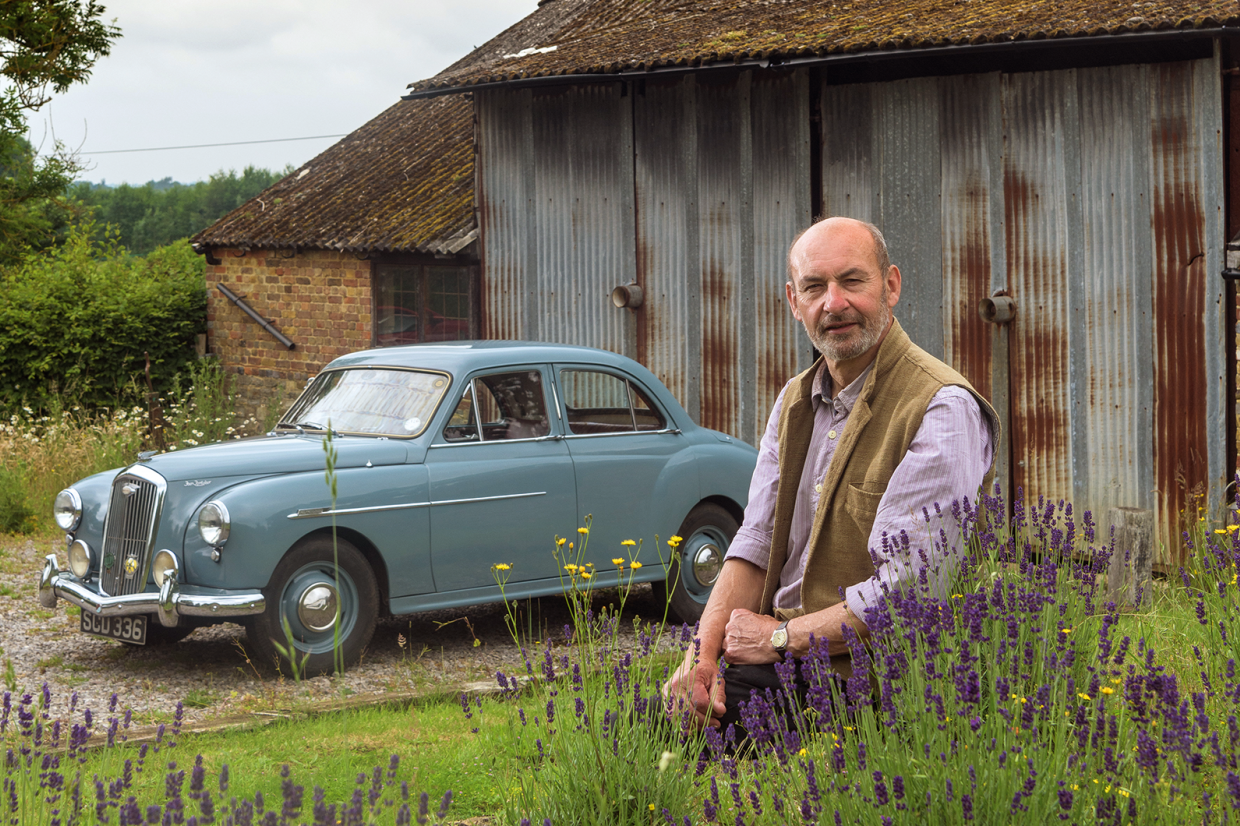
Stewart Payne’s neighbours offered him their Wolseley 4/44 in 1970 when he was learning to drive.
“It had been rubbed down for a respray that had never happened,” he recalls. “It had new sills but they were still in primer and just riveted in place. There was rust in the wings, the doors were different colours and the wheels different colours. It had a few months left on its MoT and they didn’t think it was going to pass its next one.
“So they knocked on the door and said: ‘If Stewart wants it, for 15 quid he can have it.’ I just loved it. All my mates were getting Minors, Minis or Austin A40s and this was different.
“It had a faded elegance to it. The headlining was sagging, the seats had collapsed, there was rust everywhere and it smoked like a chimney. But you sat in it and you still got that smell of leather, and the walnut dash, all the switches and dials…”
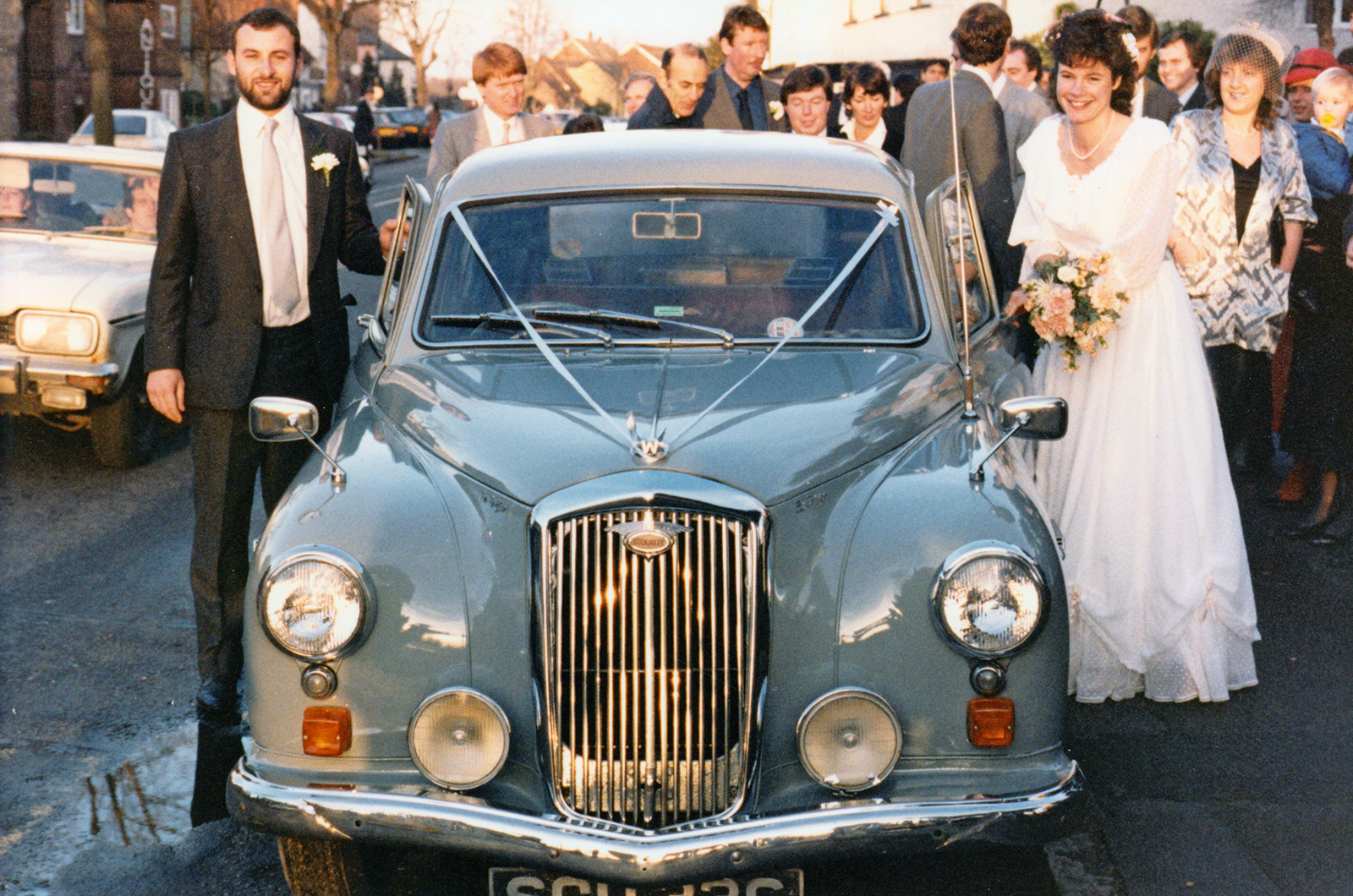
The 4/44 played a starring role in its owner’s wedding in 1985 – eventually
In February 1971 the Wolseley passed its first MoT in Payne’s ownership. Since then the 1956 saloon, with modest 1250cc pushrod engine, has been an integral part of his life and the many adventures along the way.

